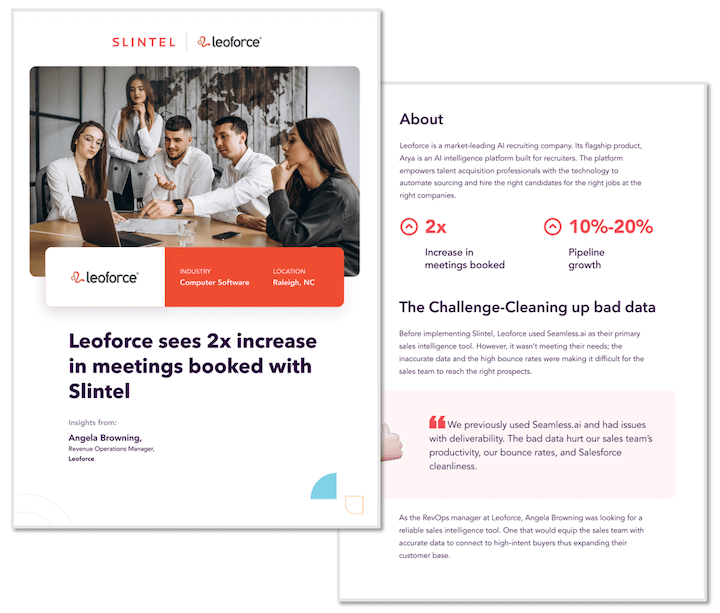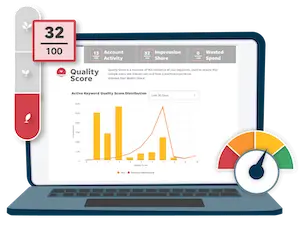Every business relies on leads–potential customers who have shown some level of interest in their product or service. But not all leads are the same. Some are ready to buy, while others need time, education, and engagement before they consider making a purchase.
Businesses categorize leads into three types to better understand and manage them: cold, warm, and hot. Cold leads are people who may not be aware of your brand or actively looking for a solution, while hot leads are highly engaged prospects who are ready to take action.
This article focuses on the key differences between hot vs. cold leads and why distinguishing between them matters. Knowing where a lead falls on the spectrum helps businesses tailor their marketing and sales efforts, ensuring that cold leads are nurtured effectively while hot leads receive the right push to convert.
Contents
- What are cold leads?
- What are hot leads?
- Major differences between hot leads vs. cold leads
- How to convert cold leads into hot leads
- Building a feedback loop
What are cold leads?
Cold leads are individuals or businesses that haven’t interacted with your brand before. They’re unfamiliar with your product or service and often aren’t actively looking for solutions, yet. While they may not convert immediately, with the right approach, they can be nurtured into warm and eventually hot leads.
Cold leads share a few characteristics:
- They lack awareness of your brand or offerings.
- They aren’t actively searching for the solutions you provide.
- They require time and effort to build trust and interest.
Common examples include website visitors who haven’t interacted with your brand beyond a single page view or social media followers who have never engaged with your content.
Similarly, people who interacted with your brand only once and didn’t show interest after can also be considered cold leads. This includes:
- People who signed up for a newsletter but never opened an email.
- Leads who downloaded a resource but haven’t engaged further.
- Tradeshow or webinar attendees who haven’t responded to follow-ups.
When working with cold leads, don’t jump straight into a sales pitch as that can push them away. These people are not ready to buy your products or avail your services, so engage them by offering them free advice and information, and keep them coming back to your website by posting helpful content.

Creating helpful resources and free downloads like this can help you turn cold leads into warm and hot leads.
👀 Looking for more ways to drive potential leads to your site? Free guide >> 25 Ways to Increase Traffic to Your Website
What are hot leads?
Hot leads are individuals or businesses who are highly interested in your product or service and ready to make a purchase. They’ve moved past the awareness and consideration stages, and demonstrate strong intent to buy.
These leads are characterized by their active engagement with your brand, such as submitting inquiries, requesting demos, or reaching out for more information. They often have clearly defined needs or problems to solve and are actively comparing solutions, making them prime candidates for conversion.
For example, if someone directly requests pricing or contacts your sales team, they are a hot lead. The same goes for website visitors who spend significant time exploring product or service pages. These behaviors signal that they are not just interested but are preparing to make a decision.

Someone who notes they’re pre-approved for a pool installation on this site would be a hot lead.
For hot leads, the focus should be on conversion. Fast and personalized responses can reinforce their decision while highlighting your unique selling points and removing any potential barriers to purchase can ensure a smooth transition to a sale. At this stage, the goal is to simplify their buying process and build confidence in their choice.
When you identify someone as a hot lead, do not delay your responses to them because they are likely talking to a competitor as well. Address all of their concerns and make the purchase process as frictionless as possible to convert hot leads into paying customers.
🕵️♀️ Want a closer look at what your competitors are doing? Free guide >> How to Spy on Your Competitors: 7 Ways to Become a Competitive Supersleuth
Key differences between hot leads vs. cold leads
Here are some of the major differences between hot and cold leads:
| Aspect | Cold leads | Hot leads |
| Level of awareness | Little to no knowledge of your offerings. | Fully aware of your brand and its potential to solve their problem. |
| Engagement level | Passive or unengaged. | Actively seeking solutions and engaging with your brand. |
| Sales readiness | Not quite ready to make a purchase; requires significant nurturing. | Ready to make a purchase. |
| Time and effort required | Requires long-term investment in nurturing and building trust. | Can focus on quick and efficient conversion. |
The three phases of converting cold leads into hot leads
Converting cold leads into hot leads involves guiding them through three key phases: awareness, engagement, and nurturing. Each phase builds upon the last, gradually increasing their interest and readiness to buy.
1. Awareness phase
Start by making your brand visible to cold audiences. Use targeted ads, SEO, and social media to reach potential customers who may not know about your offerings. Use engaging, educational content, like blogs, videos, and guides, that addresses common pain points and introduces your solution in a way that feels helpful rather than sales-driven.

A blog post that ranks in SERPs can help you get on a potential lead’s radar.
🚨 Get copy-and-paste social media posts ready for the whole year in our free social media template!
2. Engagement phase
Once you’ve captured their attention, focus on deepening the connection. Offer personalized emails and lead magnets, such as free trials, webinars, or downloadable resources, to encourage interaction. Build trust by sharing case studies and testimonials that showcase how others have successfully used your product or service.

3. Nurture phase
To keep the momentum going, maintain consistent follow-ups and use retargeting campaigns to stay top of mind. Marketing automation tools can help you track their engagement and deliver tailored content based on their actions. As they move closer to making a decision, ensure your messaging addresses their specific needs and concerns to make the transition into a hot lead seamless.

Dash by LocaliQ allows you to respond to automate lead response to turn cold leads into customers.
By moving cold leads through these phases, you’ll steadily build interest, trust, and readiness to convert, transforming them into valuable, sales-ready prospects.
Tools and techniques for managing hot and cold leads
Effective lead management is essential for converting prospects into customers and optimizing your sales funnel. The right tools and techniques can help you categorize leads, track their progress, and engage them strategically.
CRM software
These tools allow you to organize your leads, track interactions, and monitor their journey through the sales funnel. By keeping everything in one place, CRM software ensures that no opportunity slips through the cracks.
Lead scoring
By assigning scores based on behaviors such as email opens, website visits, or demo requests, you can identify when a cold lead transitions into a warm or hot lead. Most CRMs and marketing automation tools have a customizable lead scoring system that helps prioritize efforts, ensuring that the most sales-ready leads receive attention first.

Data analytics tools
These tools provide valuable information about lead behavior, engagement levels, and conversion rates. By understanding what works and what doesn’t for different lead types, you can adjust your approach to maximize efficiency and results. Google Analytics is a prime example of a data analytics tool you can use to measure the effectiveness of your lead nurturing strategies.
Combining these tools and techniques enables you to streamline your lead management process and tailor your efforts to each lead’s specific needs, improving your chances of success.
Beyond the funnel: Building a feedback loop
The sales process doesn’t end with conversion, it’s just the beginning of a longer journey. Even hot leads need continued nurturing after they’ve made a purchase to ensure loyalty and long-term value. Engaging with customers post-sale provides opportunities to strengthen relationships, encourage repeat business, and gain valuable insights.
To build a feedback loop, encourage feedback from converted leads to refine your strategies for both cold and hot prospects. Understanding what resonated with successful leads can help you replicate those tactics, while insights from those who didn’t convert can highlight gaps in your approach and areas for improvement.








